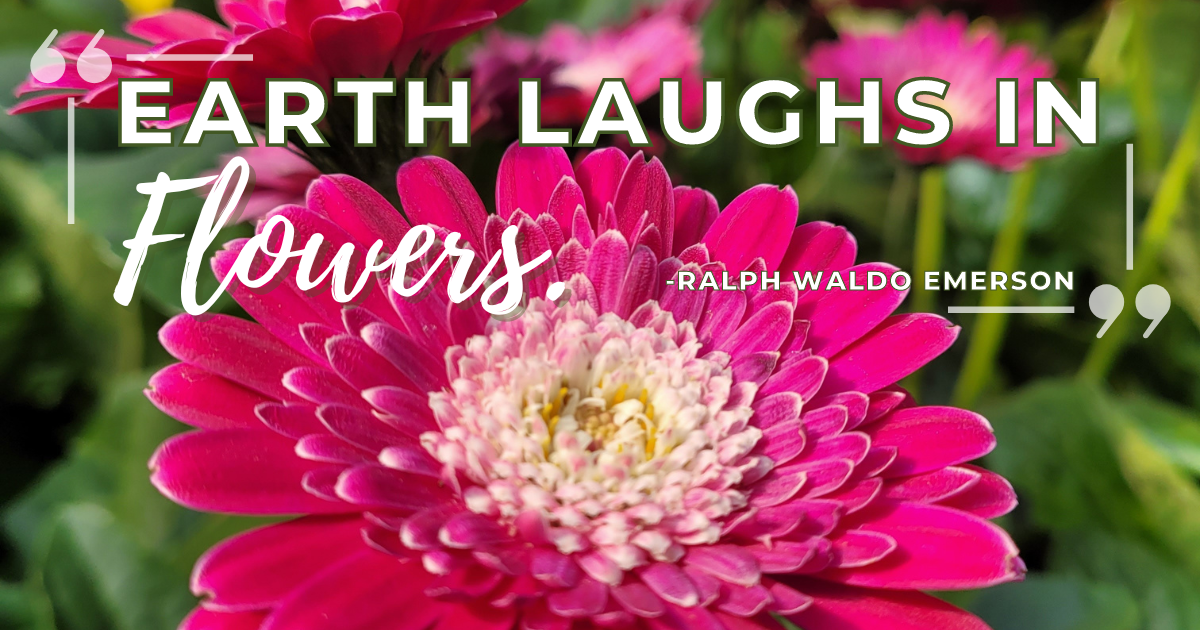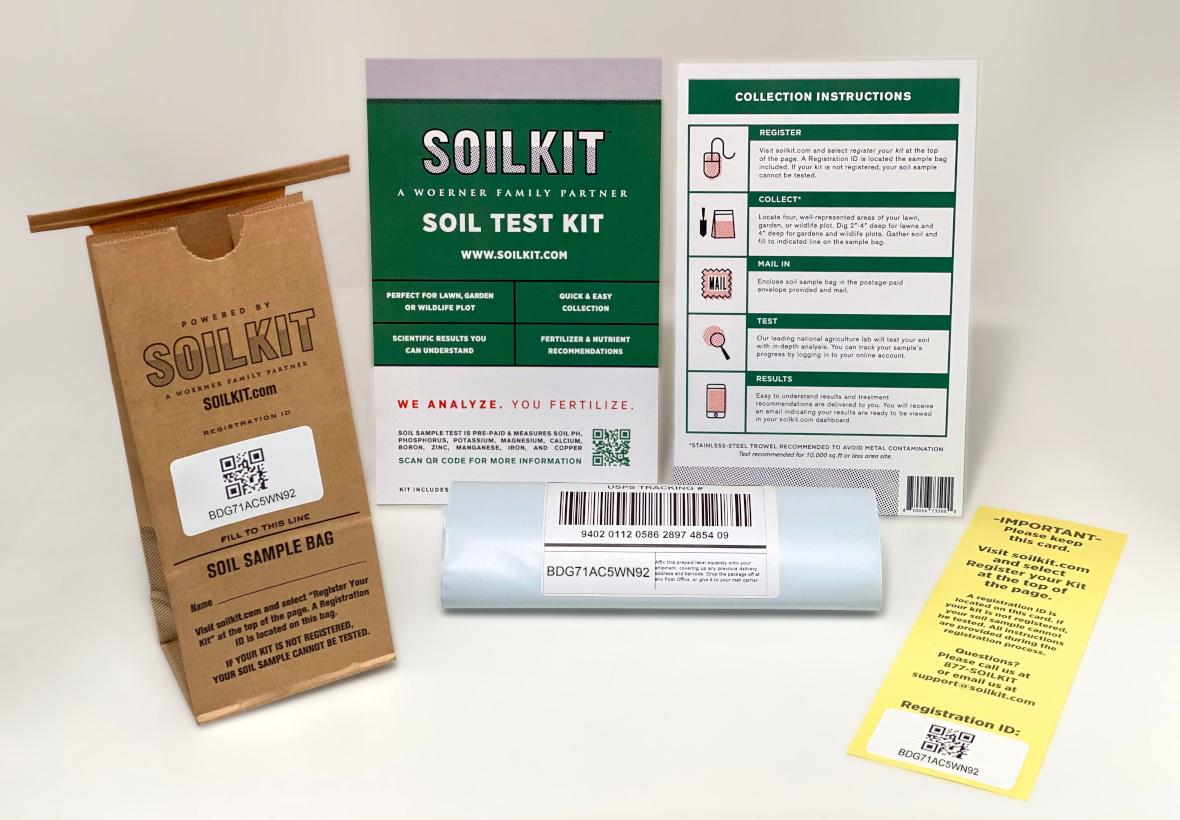The Essential Guide for May Lawn & Garden Maintenance

Spring is in full gear!
April showers or not, we have plenty of May flowers (and loads of other beautiful plants) at Marcum’s!
Check out our essential guide for May lawn and garden maintenance to get expert advice and timely tips on what to plant, pests and diseases to anticipate this month, and steps to take to get your lawn and garden in tip-top shape this spring!

- Get garden and flower beds ready to plant by adding Marcum’s Nursery Redbud Compost to your beds.
- Perform an irrigation checkup before temperatures rise. The Oklahoma State Extension has a helpful fact sheet to guide you through performing a simple irrigation checkup:
- Soak new transplants and newly planted trees and shrubs unless rainfall is abundant. Newly planted trees and shrubs should be well-watered at the time of planting and during establishment. Natural rainfall is usually not enough to adequately water newly planted material, and sprinkler systems intended to water grass almost never provide adequate moisture for newly planted material as the lawn soaks up their moisture. Check out our watering guidelines for more information about how to get your plants established and healthy.
- Apply ferti-lome® Rose & Flower Food with Systemic Insecticide to rose plants once every four to six weeks during the growing season.
- Continue using ferti-lome® Liquid Systemic Fungicide II to prevent fungal diseases on plants as necessary. If you are fighting active fungal diseases, switching to ferti-lome® Copper Fungicide will yield better results in most cases.
- Pine needle disease treatments are needed in mid-May. Clear needles to help prevent spread. For more information about pine needle disease, read Common Diseases of Conifers in Oklahoma on the Oklahoma Cooperative Extension Services website.
- Apply 3/4” of Gold Diamond Western Red Cedar mulch or Classic Grade A Cedar Mulch™ to control weeds in beds.

WARM-SEASON LAWNS
- Mid-May provides soil temperatures warm enough for the germination of warm-season grass seed. Bermudagrass seed will germinate when temperatures are above 65° F. The Mesonet website is a great place to check soil temperatures throughout Oklahoma. Click Here to get the current 2-inch Soil Temperature according to Mesonet.
- According to Oklahoma State, if you use quick-release fertilizers, you should fertilize warm-season lawns (bermudagrass) this month and monthly through August. For best results, wait until ground temperatures reach 70° F. (If you used a slow-release fertilizer in April, such as Marcum’s Nursery’s Slow-Release Fertilizer 18-6-12, you won’t need to fertilize again until June). We recommend and stock the following quick-release fertilizer for this time of year:
- Marcum’s Nursery’s BR’s Lawn Tonic Fertilizer (28-6-12)
- As nutsedge plants become visible, apply post-emergent treatments using Image® Kills Nutsedge, ferti-lome® Weed-Out Nutsedge Control (do not use this product if you are overseeding; it has pre-emergent properties as well which will prevent your bermudagrass seed from germinating), Sedgehammer®.
- For crabgrass and other broadleaf weeds, use Ike’s Crabgrass & Weed Killer™, ferti-lome® Weed-Out™ With Crabgrass Killer.
- Depending on the timing of your first pre-emergent herbicide application, now might be the time for your second application. For example, if your first application was in February, this month is the time for your second application. Hi-Yield® Turf & Ornamental Weed & Grass Stopper and ferti-lome® Weed-Out Nutsedge Control are good choices for the second application.
- Preventative treatment for white grubs can be applied until mid-May, but only apply in areas with a history of grub problems. Use Hi-Yield® Grub Free Zone III when white grubs are newly hatched and before they can cause turf damage. See more treatment options for grubs in Pest Patrol below.
- Lawns require about 1″ of rain per week during the month of May.
COOL-SEASON LAWNS
- Cool-season lawns require about 2″ of rain per week during the month of May.
- Mow cool-season grasses 2.5 inches high.
- Preventative treatment for white grubs can be applied from late April to mid-May, but only apply in areas with a history of grub problems. Use Hi-Yield® Grub Free Zone III when white grubs are newly hatched and before they can cause turf damage. See more treatment options for grubs in Pest Patrol below.
Click the button below to see Oklahoma State’s Bermudagrass Lawn Management Calendar for the entire year.
Click the button below to see Oklahoma State’s Cool-Season Lawn Management Calendar for the entire year.

- Now is the time to plant most anything you can think of – annuals, perennials, shrubs, and trees! Get growing!
- Marcum’s Nursery has you (and your crops) covered when it comes to soil choices! We, of course, carry all kinds of amendments for those looking to create their own soil, but we also recommend the following soils based on the type of garden you are planting:
Premium Raised Bed Mix
This soil is our recommendation for raised bed gardens. It is ready-to-use and provides all the nutrients your plants will need for a growing season. It’s available at all locations.
Ingredients and ratios as follows:
1/3 screened topsoil
1/3 Redbud Living Soil (details below)
1/9 Redbud Compost (details below)
1/9 Pine Bark Mulch
1/9 Pumice
Redbud Compost
Marcum’s Nursery’s own brand of fully finished compost. We recommend this product with every plant we sell! It is great for amending existing soil as it adds loads of beneficial microbes and loosens our often compact, clay-like soil. Add it to gardens each year to promote soil and plant health. It is available in 40lb bags at all our locations.
Ingredients include:
Clippings
Horse Manure and Shavings
Food Byproducts
Redbud Living Soil
Marcum’s Nursery’s own blend of nutrient-packed, organic potting soil. This is great for small container gardening as it is ready-to-use and provides all the nutrients plants need for a growing season. It is available in bulk at all locations.
Ingredients include:
Redbud Compost
Peat Moss
Rice Hulls
Pumice
Oyster Shells
Kelp Meal
Yucca
Biochar
Alfalfa Meal
Azomite
Basalt
Crustacean Meal
Fish Bone Meal
Gypsum
Diatomaceous Earth
MicroMix
This is a great option for leveling, sod installation, in-ground planting, and amending existing soil. It is available in bulk at all locations.
Ingredients and ratios as follows:
70% turned topsoil
30% Redbud Compost

- In the Lawn Care section above, we mentioned early control for grubworms using Hi-Yield® Grub Free Zone III as well as cutworms and pillbugs using Hi-Yield® Ant Killer Granules. We also carry NemaKnights™ for the treatment of grubs in small areas of your yard. NemaKnights™ Biological Insect Control is effective against grubs, weevils, borers, and more, and it is safe for birds and other wildlife. We also have an organic option for larger lawns and gardens (up to 3,000 sqft) – Nema Globe Nematodes Grub Busters Grub Eliminator.
- May is usually when bagworms start to appear on juniper, arborvitae, and, in some seasons, anything else they can attach themselves to. Catching bagworms early, in late May and early June, is best. It is also the time when you can spray with Bt (Bacillus thuringiensis), which is a naturally occurring soil bacterium that causes the bagworm caterpillars to become sick, stop feeding, and therefore die. The main advantage of using Bt is that it is very host-specific, and it will not harm people, pets, birds, or bees. Cyonara and liquid forms of Sevin® are also effective treatment options. Once bagworms become more mature, products such as Hi-Yield® 38-Plus are really the only effective treatment options remaining.
- Watch for elm leaf beetles on elm and zelkova this month as well. For more information on elm leaf beetles and how to control them, visit ferti-lome’s website.
- Now is also a good time to apply ferti-lome® Tree & Shrub Drench to trees and shrubs. This treatment provides up to 12 months of systemic protection from a host of insect pests.

PICK UP A SOIL KIT!

Available at any Marcum’s Nursery location, SoilKit provides all the supplies needed for a quick and easy soil collection. Your soil will be tested by one of the nation’s leading agricultural labs. SoilKit will provide you with easy-to-understand results and soil treatment recommendations to keep your lawn and garden healthy.
- Average rainfall for May in Oklahoma is 6.28″.
Note: Thanks to Oklahoma Coop Extension Service for providing some of the suggested maintenance guidelines.
For questions regarding May maintenance guidelines, please call Goldsby at (405) 288-2368, Oklahoma City at (405) 691-9100, Norman at (405) 447-3100, or Ardmore at (580) 223-1846.
Back to Home